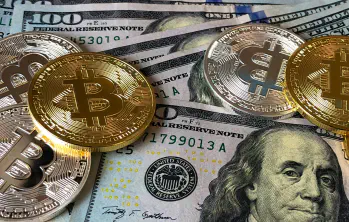U.S. regulators and the fight against market abuse
This article was originally published in Advisor Perspectives. You can find the original article here.
The U.S. is known for enforcing significant penalties for financial misconduct. Our global trade surveillance report revealed that 205 fines worth $2.92 billion were levied for market abuse between 2019 and 2023 (Q3). U.S. regulators accounted for 133 of these fines – more than five times as many enforcements as any other region – with a total value of $2.67 billion, representing 91 percent of all financial penalties.
It should be noted that the Commodity Futures Trading Commission (CFTC) fining JP Morgan $920.2 million in 2020 significantly shifts this value upwards for the time period in question. However, even excluding this outlier, the U.S. consistently issues the largest fines by some significant margin.
Not only is the country a regulatory leader in enforcing fines but also in terms of implementing new enforcement strategies, such as taking action against instances of non-compliant eComms (electronic communications) surveillance. There have been recent examples of substantial fines related to unmonitored communication channels, while enforcements for conduct relating to digital assets represented more than 20 percent of all CFTC actions filed during the 2022 fiscal year.
Does money talk?
Why does the U.S. sit at the top of the table for market abuse fines?
One reason is strategy. U.S. regulators still see the threat of huge fines as a significant deterrent for firms, as it not only impacts the bottom line of the company but also carries the risk of reputational damage. In the eyes of the regulators, without the threat of such hard-hitting penalties, market abuse has the potential to be an increasingly prevalent problem. This type of enforcement strategy is strongly embedded into U.S. culture. But it is far from a universal tactic.
Regulators in the Asia-Pacific (APAC) region take a very different approach. Their enforcement approach is much more discreet and adheres to cultural values where individual accountability and societal harmony carry great importance. This means that the reputational damage associated with a regulatory breach is seen as far more damaging (and therefore more of a deterrent) than handing out large fines in high numbers.
Of course, while there are overarching regional trends, individual regulators often demonstrate particular areas of focus, with different forms of abuse bearing higher levels of enforcement action. For example, the CFTC consistently issues the largest fines for market manipulation, whereas the UK’s Financial Conduct Authority (FCA) enforced the most penalties for insider trading.
A region’s regulatory strategy and culture undoubtedly play a role in explaining some of the differences between U.S. regulators and other international bodies. However, U.S. enforcement action still outweighs any other region by such an extent that further analysis is required. Are the country’s regulators simply more active in identifying and punishing instances of market abuse than their global counterparts? Or is it more representative of a country with huge resources, wealthy companies and a strategic approach that prioritizes fines?
The impact of global shocks on enforcement action
Reviewing historical enforcement data provides a useful indication of the regional variations in regulatory trends. But while the volume and value of fines suggests the U.S. adopts the most stringent approach to market abuse surveillance, the variation in enforcement action typologies says a lot about the ever-evolving world of regulation.
The research that underpins the report illustrates significant year-to-year variation in the total value of fines issued between 2019 and 2023. The impact of the Covid-19 pandemic is one contributory factor. Equally, it could be a change in regulatory approach that causes a significant movement in enforcement action, such as the shift that was caused by the transition from the Trump-Pence administration to the Biden-Harris administration.
Regardless of the cause, this imbalance raises interesting questions: What impact does constant change have on markets across the world? Are current fines and regulatory frameworks, processes and technology set up to combat emerging threats, especially in an increasingly interconnected world? With so much variance seen in the U.S. alone, and the same global shocks likely to impact other individual markets, is it realistic to believe that we can fight market abuse on a global scale?
Ultimately, rather than act as a leader in enforcement alone, does the U.S. need to use its position to lead a collaborative global fight against market abuse?
A leader in collaboration
A landscape that facilitates cross-market, cross-product and cross-border activity needs a regulatory regime and surveillance system that can do the same thing. New initiatives are emerging that attempt to align regulators more closely than ever before in an attempt to monitor trading activity that is becoming increasingly borderless.
There is an increased focus on under-represented asset classes. As previously noted, a fifth of the CFTC’s enforcements in 2022 were for digital assets. But while the U.S. is showing its ambition with digital asset enforcement, when it comes to legislation it is the EU which has taken a lead in this area. The passing of its Markets in Crypto-Asset Regulation (MiCA) has prompted regulators around the world to align their policies with this framework.
Domestically, there have been several attempts to pass legislation on crypto assets through Congress. However, the CFTC has recommended that Congress “bridge the gap” between itself and the Securities Exchange Commission (SEC) “in the regulation of the space by properly defining the difference in commodities versus securities.” This is an area that has yet to be rectified and some confusion remains over which body is best placed to regulate crypto assets.
Both federal regulators are also working on cross-border partnerships and strategies. The CFTC will continue its emphasis on coordination and parallel actions with criminal authorities and regulatory partners internationally, while the SEC is focused on addressing market abuse challenges in securities markets globally. This includes providing cross-border clarity on regulatory scope, removing duplicative regulation, and identifying gaps in international regulatory frameworks.
Finally, there is the increasing use of surveillance technology, allowing companies to identify market abuse scenarios by asset class. This technology constantly monitors and updates to match a criminal world that is highly sophisticated and operates 24/7. However, to work to its optimum levels, it needs to be part of a collaborative regulatory strategy, as many firms’ regulatory efforts continue to be challenged by organizational and technological silos.
Leading the fight
While financial penalties will always have a role to play in keeping companies in line with regulatory policy, regulators need a forward-looking strategy to prevent future market abuse and support firms in their efforts to operate compliantly.
This could be done in a number of ways. For example, how are regulators sharing information about the enforcement action they’re taking, so that firms can continue to educate themselves about best practices? Are there mechanisms to tackle the root causes of market abuse rather than just levying huge fines as punishment?
The U.S. is clearly a leader in terms of regulatory enforcement. However, its regulators also have an important role to play in informing and shaping regulatory policy on an international scale. As financial services becomes an increasingly globalized and borderless industry, this role is only likely to become more important.



